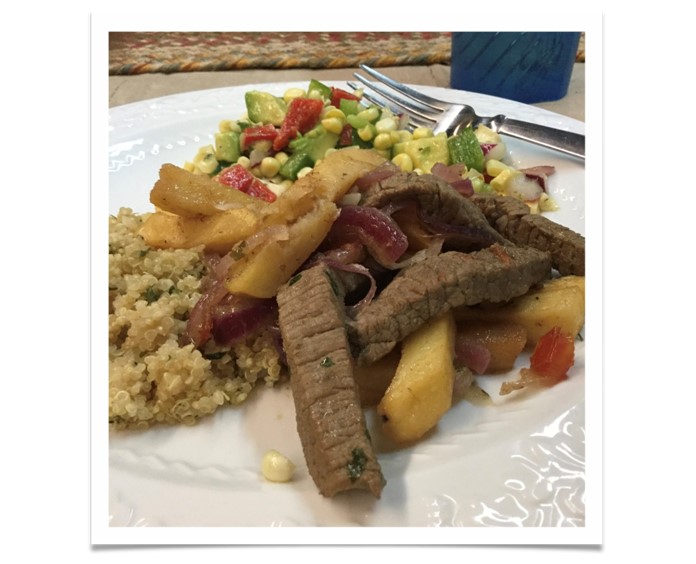(Mostly) About Food… Vegetable Ceviche? Why Not?
(Mostly) About Food…
By Diane Pohl Minott
Vegetable Ceviche? Why Not?
Last month, I attended the Peruvian cooking seminar presented by the New Kitchen Store and Chef Brad Hindsley, MCFE/MBA. What intrigued me was the chance to make some Peruvian food, which is so justifiably praised these days. What most intrigued me was the chance to make vegetable ceviche. A picture of precisely diced vegetables in a lime dressing immediately came to mind.
That is exactly the recipe, along with some fresh mozzarella, that Chef Brad developed and demonstrated. It was easy and delicious, and it really got me thinking about creativity in food and culture. A quick search on Google does not produce any recipes for Peruvian vegetable ceviche. (But for those squeamish about raw fish and wanting a quick primer on knife skills, check out this wonderful video: https://www.youtube.com/watch?reload=9&v=bM_Fc1SasSY.)
But as ceviche is really a concept that includes room for wide variation in the ingredients, why not eliminate the fish and just incorporate a variety of veggies and an avocado (a single-seeded berry)? Chef Brad’s ceviche was delicious, and it brought to mind some encounters with other cultures where variation isn’t as prized.
In my travels and in the time we lived abroad, I found Georgians to be the most creative. Whether visual arts, musical arts, architecture, literature or you-name-it, the culture is infused with creativity. With food, the situation is different: tradition is valued. Whether going to a Georgian home or to a Georgian restaurant, the menu choices were pretty much standard.
In fact, I was amazed to learn that when a Georgian wants to cook a particular dish, one of her stops at the market is to a spice lady. They have mounds of spices before them along with a shot glass. Name the dish you are making and the number of people being served, and the spice lady wraps up the spice mix for you in the proper quantity. Of course, this method cuts down on creativity, but it does eliminate dozens of aging herb and spice bottles from the kitchen cabinets. I suspect the spice ladies are masters of their trade and only sell the finest ingredients. Georgian women would demand no less.
On another occasion, I was setting up a small dinner party at a new restaurant in Tbilisi. The chef was French, and this created a lot of buzz among ex-pats. One of my guests was a vegetarian more or less, and there wasn’t a meat-free entrée on the menu. I suggested to the chef that quiche Lorraine could be amended to suit a person who does not eat meat. My suggestion was to leave out the bacon and substitute smoked salmon and maybe add some dill to complement the fish.
I did not count on a knock-down, drag-out fight. “If I left out the bacon, Madame, it would not be a quiche Lorraine,” said the chef.
“Correct,” I replied. “It would be a smoked salmon quiche.”
“But it would not be a quiche Lorraine.”
“But it would be delicious, and my guest could eat it.”
There was no moving the man. Perhaps he was loathe to modify a French classic (most likely) or was just having a bad day. Perhaps my attitude rubbed him the wrong way, or perhaps it never occurred to him that a quiche is the perfect delivery system for a host of variations, including last night’s roasted veggies. An American cook would catch on to that in about five seconds.
American cooks have no problem changing up a recipe. Look on any website where recipes are posted, and responses pop up immediately about how the recipe was changed to accommodate taste, or often, ingredients on hand. There is no hesitation to improvise, and even the most ancient and revered recipes are altered for any number of reasons with no regret. Of course, there are always family holiday standards that must be prepared as they always have been. Nothing wrong with that.
 |
Creativity in cooking is an American tradition, no doubt because of the melting pot it is but possibly for a lot of other reasons as well. The reader, no doubt, will have some theories about this.
I’m including a photo of the Peruvian food we cooked at the class. In the foreground is a beef stir fry that includes french fries. Potatoes are not a traditional choice for a stir fry, but why not?
Note: Chef Brad told me that he can be booked to cook a meal in your home. That sounds like an amazing holiday gift.
